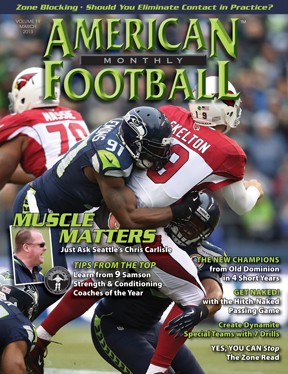Article CategoriesAFM Magazine
|
Strength Report – Bridging the Gap Between the Weight Room and the Field for Linemenby: Steve MorrisExplosive Football Training © More from this issue If you want to get faster or build the kind of strength that has you dominating your opponents on the field, you need to lift heavy and you need to lift fast. Nothing can beat the speed produced (by building strength) with big, compound lifts like deadlifts, squats, and front squats. These are the base lifts for a lineman - they build strength and increase real football speed like nothing else. But, even the mighty barbell and dumbbell have their limitations. Even the best designed football strength and speed program will have some “holes”. Banging away at the big lifts with their variations and accessory exercises, is an excellent base. It increases raw strength and muscular size. But, even with that base, strength leaks can develop. Strength leaks are just what they sound like; areas where you lose your ....The full article can only be seen by subscribers.
|
|
|||||||
| HOME |
MAGAZINE |
SUBSCRIBE | ONLINE COLUMNISTS | COACHING VIDEOS |
Copyright 2025, AmericanFootballMonthly.com
All Rights Reserved





